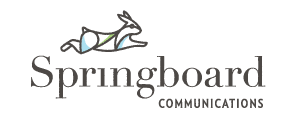The Possibility Gap
In early 2014, I’d been part of the communications team at Denver Public Schools for almost five years. The job was demanding — and inspiring — enough that it had brought me to tears many times. But on a sunny February morning, ten minutes into a professional development session for district leaders, I cried tears of hot shame like never before.
PD + central-office workers = tears streaming down my cheeks… Yes, you read that right.
The session, called Poverty 101, was held in the auditorium of a former elementary school, and presented almost entirely via a series of short videos. The videos were created by Dr. Donna Beegle, who — in person, as well as on screen — helps educators around the country understand the “crisis of poverty” and how to address the educational barriers that poverty creates.
I came to Poverty 101 thinking I knew something about the topic. In my own family, money was a constant source of stress, and my parents fought about it, a lot. It seemed like one of our cars was always breaking down, my dad worked a lot of overtime and we bought off-brand clothes and cereal.
My kid brain interpreted these circumstances as poverty. Throughout my childhood and into my adult life, I’d always thought of myself as having grown up without much. If someone had asked me if I’d grown up poor — and I didn’t feel too embarrassed by the question — I would have said yes.
And then, gentle and smiling, Dr. Beegle flattened my memories of childhood wanting like a steamroller. She acknowledged that people who compare their circumstances to others’ and come up short might believe they’re among the “less fortunate.” She also pointed out that many of those people go on to join professions in which they serve children and families living in poverty, mistakenly believing that they understand its devastating effects. Just as I had.
As Dr. Beegle clearly defined generational poverty, and detailed her family’s never-ending struggle to meet their most basic needs for food, clothing and shelter (watch a similar talk here), I realized for the first time how little I knew about poverty.
But it wasn’t just that lack of fundamental needs I’d failed to understand. As Dr. Beegle went on to compare middle-class life experiences (which, for the first time, I recognized as my own) and generational poverty, she shared an illustration I’ll never forget. She focused on the messages that children in poverty receive, from the youngest of ages, in places that we all believe are there to serve them, like schools.
Dr. Beegle recalled touring an elementary school in a middle-class neighborhood. The hallways exploded with color and joy, with class projects, artwork and handmade posters everywhere. The posters were emblazoned with phrases like, “Believe In Your Dreams” and “Soar Like an Eagle.”
Next, she described walking the halls of an elementary school in a poor neighborhood. Instead of paintings and posters, the student spaces were dominated by reminders of rules and consequences. “Believe” and “Soar” were replaced by “Never” and “Absolutely No.”
Too many poor kids come to school hungry, sick and scared. And that gap in fundamental needs is compounded by an enormous disparity in the possibilities they’re encouraged to imagine for themselves. For poor kids, whose learning and growth is most often eclipsed by that of their better-off peers, the achievement gap is preceded by a possibility gap.
At that time, my first child was two years old. In the space of one moment, I thought about the many privileges she was born into and about the millions of kids who won’t be encouraged to dare or to dream, or will be denied the resources and opportunities to make their dreams come true. And there were the shame and the tears, as I realized exactly how lucky I am and how much I had to learn.
But what is so brilliant about Dr. Beegle’s work is that these feelings of despair are quickly replaced by hope. Yes, there is systemic inequality that no educator can fix, but those of us who work with families experiencing poverty can make immediate, tangible changes by learning Poverty 101. In just a few hours, we can learn enough about what poverty is, why it exists and how it affects children and families to make a real difference in how we support them.
If you think your team or organization would benefit from Poverty 101 training, it’s provided in a variety of ways by Dr. Beegle’s organization, Communication Across Barriers.
And if you’re still reading down this far, thank you. It’s scary to put this out there, because I’m afraid of failing to clearly explain a worldview that’s so important to me and my work. But this is probably as close as I’ll ever get to explaining my “why,” my purpose in supporting educators who make a difference for students experiencing poverty. Thanks for supporting me.
With gratitude for Dr. Donna Beegle and for my parents, who always believed in me.
